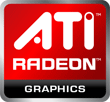ATI Radeon HD 5830 Review: Filling The Gap
ATI Radeon HD 5830

As we've mentioned, the Radeon HD 5830 was designed to slot into AMD's graphics card line-up right in between the Radeon HD 5770 and the Radeon HD 5850. If you take a look at the specs in the table below, you'll see how AMD went about it.

The Radeon HD 5830 has the very same 2.15B transistor GPU at its heart as the Radeon HD 5850 and 5870. With the 5830, however, a number of stream processing units have been disabled, bringing the total active SP count down to 1120. The same 1GB of GDDR5 memory running at 1GHz (4.0Gbps effective) used on the 5850 makes its way onto the Radeon HD 5830, but the GPU clock on the 5830 is much higher--800MHz to be exact. Texture fillrate and compute performance for the 5830 is again somewhere in between the 5770 and 5850, but note that the Radeon HD 5830's raw pixel fillrate is actually a bit lower than the more affordable 5770. Also note, that the Radeon HD 5830 has a max board power of 175W, which is higher than the 5850. Despite having fewer Stream Processors, the higher GPU clock on the 5830 will result in higher peak power consumption.





Radeon HD 5830 cards from XFX, PowerColor, HIS, Sapphite, and Gigabyte
AMD also pointed out that the Radeon HD 5830 will be shipping from multiple add in board partners with custom PCBs and coolers from the get-go. This is in stark contrast to a typical launch, which is usually comprised of nothing but reference cards outfitted with different decals. It's not until the second wave hits (if there is a second wave), that the custom versions of a particular card arrive. Although we tested a reference card for this article, physically, it was nothing like some of the partner Radeon HD 5830 boards coming down the pipeline. Above is an assortment of cards from a few well respected AIB partners. Notice the difference in size between the XFX card and some of the others.
Our Reference Radeon HD 5830 Looked Just Like A 5870
The reference ATI Radeon HD 5830 we tested was virtually indistinguishable from a Radeon HD 5870, aesthetically speaking. The card was 10.5" long and featured a black fan shroud that encased the entire PCB. The card's cooler has a barrel fan that draws air into the shroud, where it is forced through the heatsink and partially exhausted from the system through vents in the card's mounting plate. Two more small vents at the back also direct some air within the system.
The outputs on the Radeon HD 5830 consist of dual, dual-link DVI outputs, an HDMI output (with audio) and a DisplayPort output, and like the other members of the Radeon HD 5000 series the 5830 supports 3-monitor Eyefinity configurations. Also note, that because the card has a max board power of 175W, it requires dual 6-pin supplemental PCIe power connectors.






